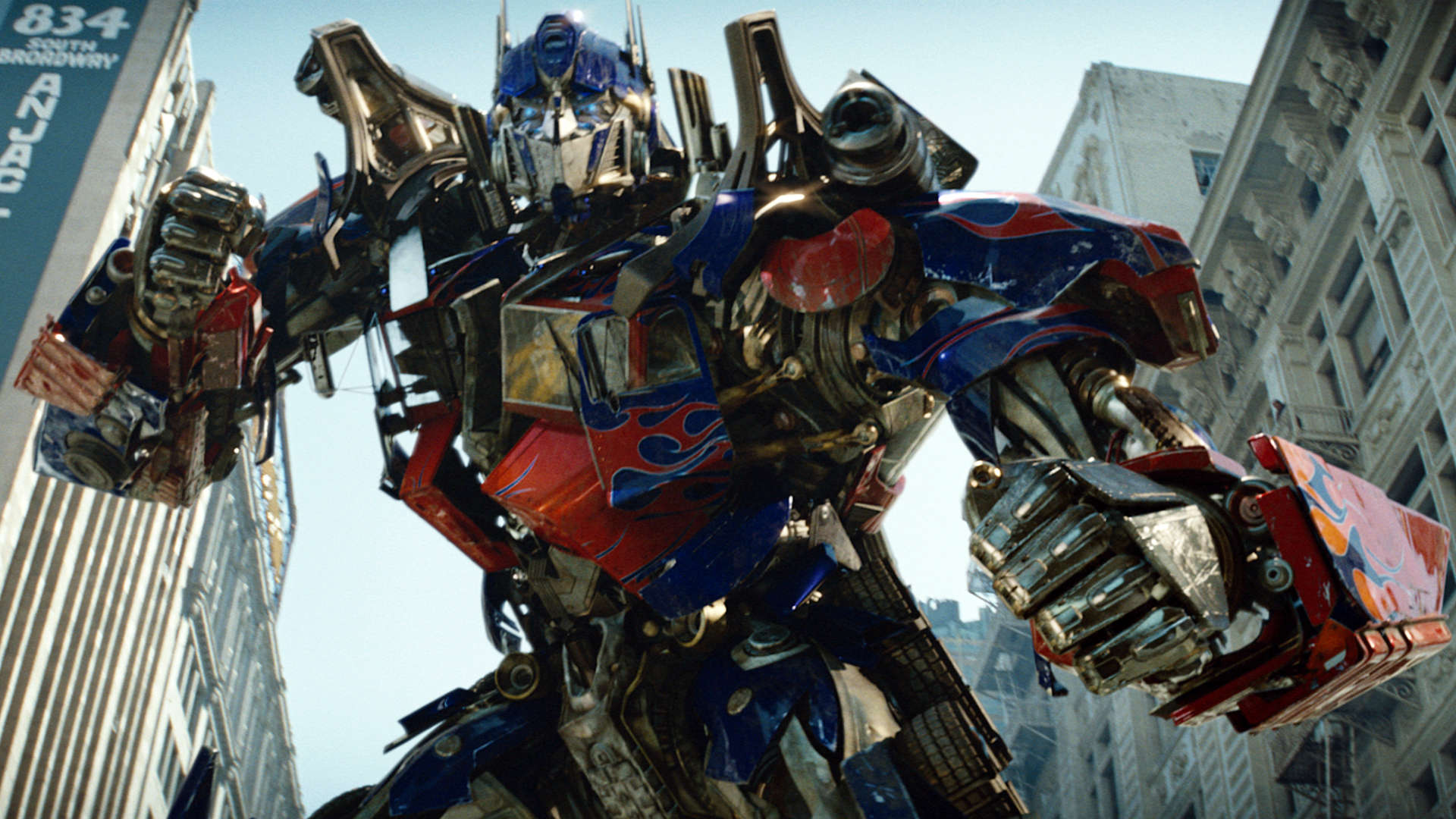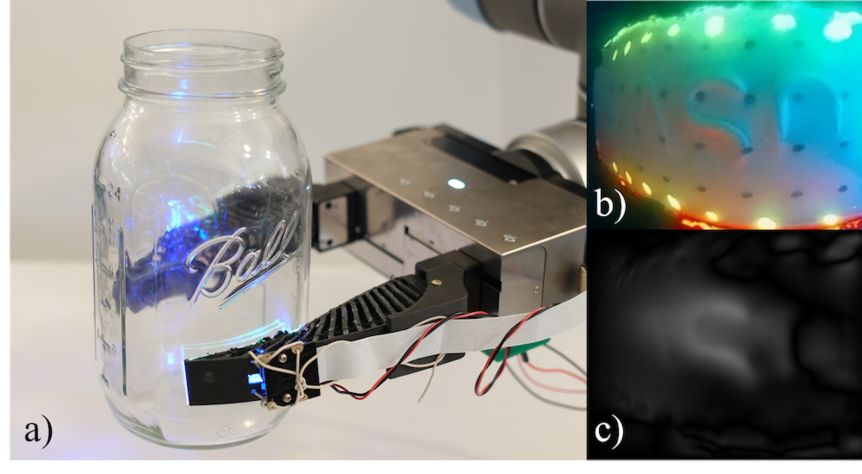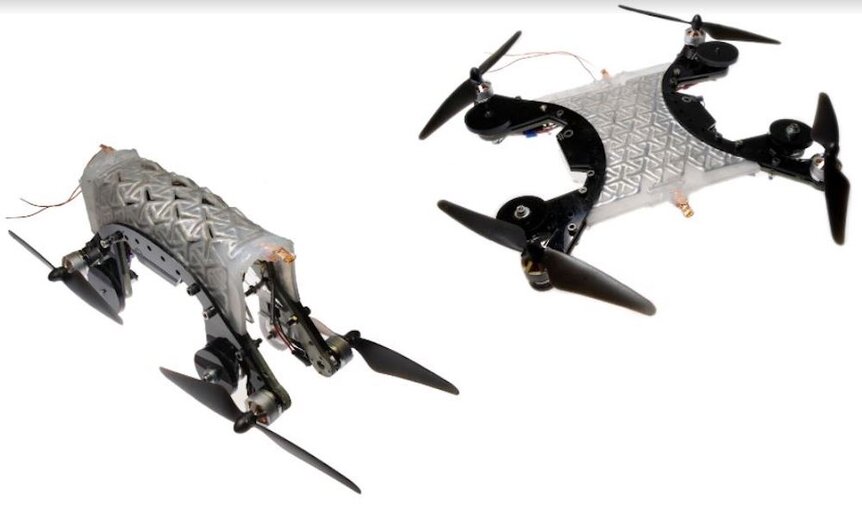Create a free profile to get unlimited access to exclusive videos, sweepstakes, and more!
The science behind Transformers' shape-changing robots
How, exactly, do Autobots roll out?

It’s been 15 years since the first live-action Transformers film hit theaters and introduced a new generation to the Autoboots and Decepticons. Whatever your feelings about the movie and the franchise that followed, there was almost universal praise at the time regarding the visual effects. Even a decade and a half on, the transformations from humanoid giant robot to vehicle are stunning to behold.
We won’t pretend that earthly robotics are anywhere near the complexity and elegance of Cybertron’s living machines, but that’s not for lack of trying. Advances in robotics are inching slowly toward a world in which something akin to a Transformer might one day exist. This is how scientists are doing it.
GIVING ROBOTS PERCEPTION
Every kid who every played with Transformers toys was probably more enamored with their shape-shifting abilities, but you can’t have a living, humanoid robot without granting them some ability to sense the world around them. In fact, any evolving machine would likely need a way to gain sensory data in advance of figuring out how to fold themselves in novel ways, so that’s where we should start too. Luckily, scientists and engineers are hard at work doing just that.
Some senses are relatively easy. We’ve spent plenty of time, as a species, developing effective cameras and microphones for picking up and recording visual and auditory data. Giving a robot sight or hearing is as simple as mounting some cameras and microphones at the appropriate locations and giving them the software to interpret that data. Certainly, even that isn’t the easiest thing to accomplish but these are comparatively mature technologies. When it comes to the other senses, things get a little more complicated.
We can’t imagine why a Transformer would need a sense of taste — in fact, now that we think about it we almost don’t want them to have one lest they find out that humans are tasty — nevertheless, scientists have developed a robot capable of tasting in a limited way.
A team from the Bio-Inspired Robotics Laboratory at the University of Cambridge built a robotic chef which is intended to cook food for humans. Cooking palatable cuisine can be a challenge for an entity which doesn’t understand how things taste, or how texture impacts those tastes, which means robots aren’t the best chefs.
The robot doesn’t have a mouth or a tongue and, instead, uses sensors on the end of a robotic arm to gain information about the way food tastes. In essence, it measures the level of salt in a dish at different points of preparation or chewing in order to understand how taste changes as food is cooked or consumed. It’s a rudimentary sense of taste, but it lays the foundation for a more robust suite of tasting functions which could result in effective robotic chefs, or Autobots who can break for snacks.
Perhaps more important, at least if you’re going to battle for a planet, is a sense of touch. Without out, you might not be able to tell the difference between a Decepticon and a soft, squishy human. This is a concern among roboticists even in the real world. As robots increase the frequency of their interactions with humans it is increasingly important that they be able to do so safely. Having an effective sense of touch, delivering information about shape, texture, and pressure is important part of making sure humans remain safe and robots aren’t deactivated.
Scientists from MITs Computer Science and Artificial Intelligence Laboratory have taken a novel approach to giving robots a sense of touch, by putting eyes inside their hands. The team placed a camera inside the interior of Fin Ray grippers — robotic fingers modeled after the fins of fish — which way the way the fingers deform when they come into contact with an object.
Those deformations are then sent to a computer which interprets them into touch data. It’s good enough to pick up tiny details on the surface of a fake strawberry and could be used to literally let future robots see what they are feeling.
CHANGING SHAPE
Cybertronians don’t appear to have a whole lot of soft materials, they’re mostly solid metals and electronics. It’s not wholly clear how they achieve their transforming abilities. In their stories, whatever metal evolutionary process allowed it to happen is usually glossed over in favor of being awesome. That’s before we even consider that their humanoid forms appear to have a lot more mass than when they are vehicles.
As a result, human scientists have been hard pressed to replicate their abilities and have had to rely on novel approaches to build robots capable of changing shape and function. Still, advances in materials science have brought us some pretty sweet machines in recent years.
The team at the Soft Materials and Structures lab at Virginia Tech has taken the prospect of shape-shifting machines seriously and developed a robot capable of functioning either as a land-based car or a flying quadcopter.
They took inspiration from kirigami, the Japanese art of paper cutting, to achieve unique shapes. When coupled with a metal which melts at low temperatures, their robot is capable of simple transformations in near real time. While their proof-of-concept changes between two relatively simple shapes, the principle could be applied in various ways to create just about any shape you can imagine. By changing the kirigami lattice and applying heat to specific locations, the possibilities are nearly endless.
Things get even weirder if you’re willing to bend the definition of a robot a little bit. A robotics team from Tianjin University has developed a class of self-assembling soft robots made of 3D printed liquid crystal elastomer. It begins life looking like a limp shoelace but takes on some interesting characteristics when heat is applied.
The crystal structure of the elastomer causes it to roll up into a coil and eventually a cylinder. Moreover, it can use the heat energy to climb an incline of up to 20 degrees. The only downside, at least to any enterprising Transformer, is that the reaction requires temperatures above 160 degrees Celsius. That means our Autobot friends would either need their own heat source in order to change shape, or else they’d be better off invading Venus.
We’re still in the early stages of building our own real-world Transformers, but every "roll out" starts with a single step.




























